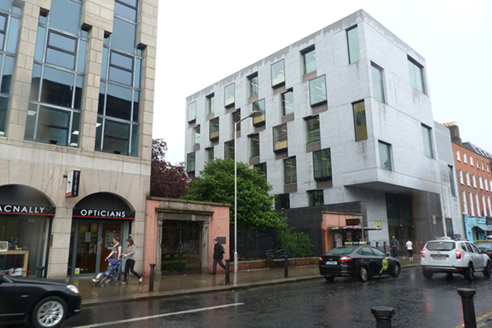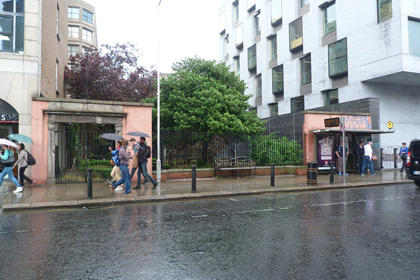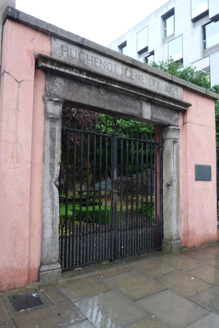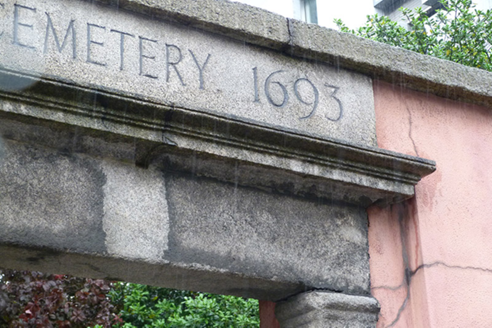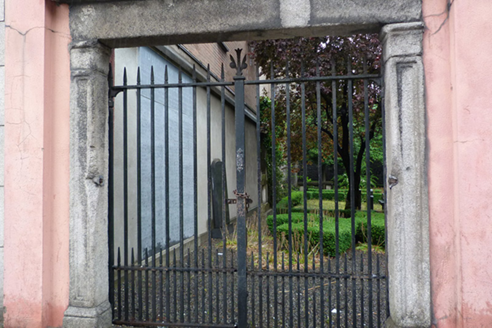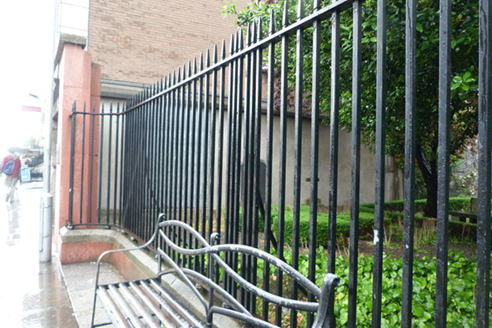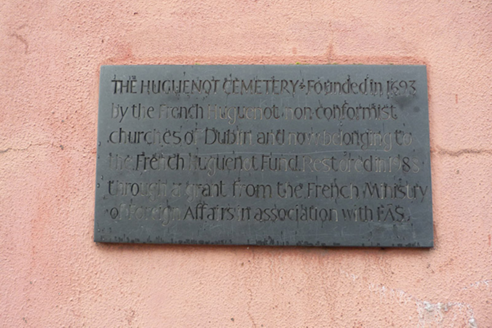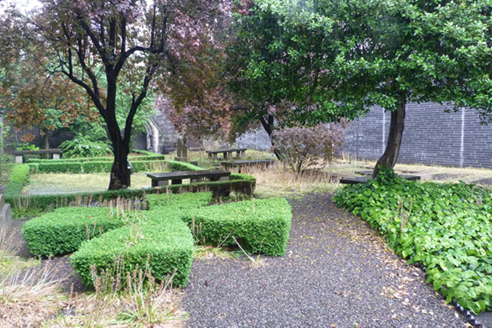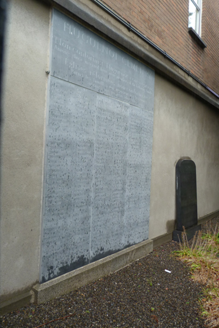Survey Data
Reg No
50100247
Rating
National
Categories of Special Interest
Architectural, Artistic, Historical, Social
Previous Name
French Burial Ground
Original Use
Graveyard/cemetery
In Use As
Graveyard/cemetery
Date
1690 - 1695
Coordinates
316296, 233444
Date Recorded
10/06/2016
Date Updated
--/--/--
Description
Huguenot cemetery, founded 1693, in use to 1901, restored 1988. Cemetery contains burials of members of Dublin's Huguenot community, who arrived in seventeenth century. Memorials comprise slate plaques, stone gravestones and table stones. Burial plots bound by low box hedges to gravel paths. Bound to west and east by masonry walls of neighbouring buildings. Wall to west has slate memorial plaque listing names of those buried. Rear wall of rubble basalt, with round-headed doorway, flanked by columns in gabled surround of dressed stone and having timber battened door. Rendered plinth boundary wall with cut-granite chamfered coping supporting wrought iron railings. Pair of flanking gate screens including cut-granite panelled pilasters supporting cornice on frieze below plaque inscribed: "HUGHENOT [sic] CEMETERY 1693".
Appraisal
One of several Huguenot cemeteries in Ireland, this small cemetery, established in 1693, is the resting place of the descendants of Huguenots who fled religious persecution in France in the mid seventeenth century. A memorial plaque in the cemetery lists the surnames of those buried there, including members of the Becqett family, relatives of the writer Samuel Beckett. It is the burial place of some of Dublin's earliest and most prominent Huguenot families whose descendants made a huge contribution to the commercial and financial development of the city. The burials in Merrion Row are of those who belonged to the French Non-Conformist Church. Their earliest place of worship was in a rented house known as Saint Brigide's, off Bride Street, but they later moved to Peter Street. The Merrion Row cemetery, now flanked on either side by twenty first-century developments, remains intact and well maintained, and includes an early entrance screen and boundary wall to the rear with a dressed stone door opening. Although inaccessible to visitors, the graveyard has a distinctive character as a pocket of restful green space in an otherwise busy part of Dublin city centre.
